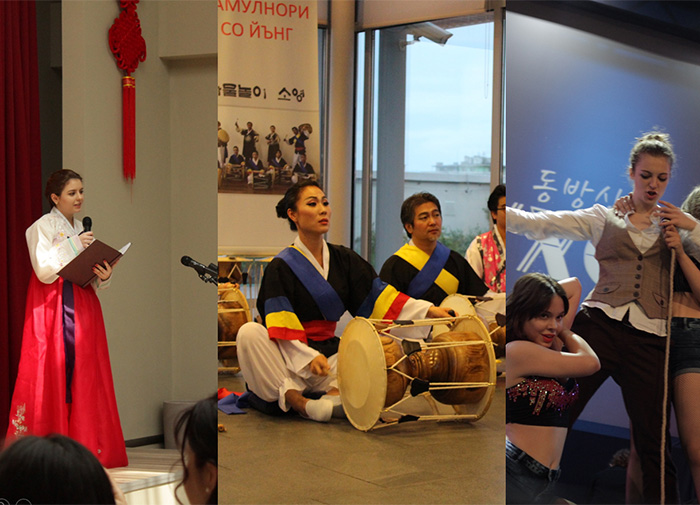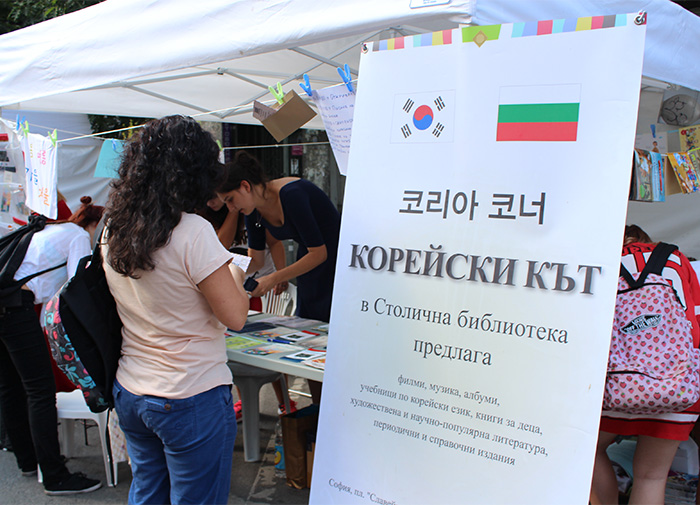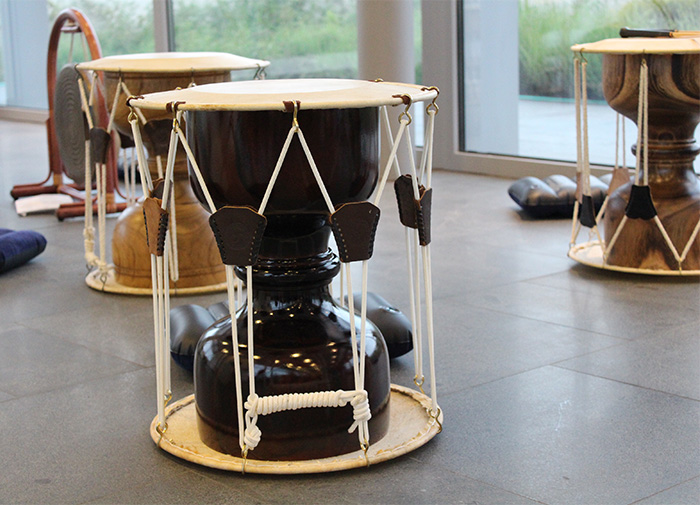View this article in another language
- 한국어
- English
- 日本語
- 中文
- العربية
- Español
- Français
- Deutsch
- Pусский
- Tiếng Việt
- Indonesian
The summer seems to be almost over, now that everyone is back from their holidays and the sun doesn’t shine as brightly as it did in August. Before the leaves start to fall and we all dive into Chuseok celebrations, however, it's the right time to look back at Korean events that took place in Bulgaria over the past couple of months.
Starting with the Day of Korean Culture at the Korean studies department at Sofia University, going through the exciting qualifications for the annual K-pop World Festival, and reaching the end of August with a samulnori performance for the last summer festival in Sofia, we can say that the this season was a success, with the record number of Korean cultural events happening in Bulgaria, the land of rose oil and exceptionally good yogurt!

We are going to rewind the clock and take a look at the above-mentioned performances in a series of reports. Buckle up and let’s head back to Aug. 29 along the Alexander Stamboliyski Boulevard in Sofia! On that date, the residents and tourists in Sofia were able to experience Korea in a variety of ways. The Korea Corner, a small area with books and CDs about Korean lifestyle, culture, arts and history located at the Sofia City Library, had a pavilion as part of the many organizations, artists and institutions that exhibited their work during the Sofia Disha festival. The festival is a yearly summer event closing the central streets and boulevards of Sofia to pedestrians only, and covering them with exhibition tents and stages where culture and performances mix. This year, the festival moved to a different location each Sunday in August.

In the last week of the festival, the Korean Corner joined the summer vibe with a full-day program. Visitors were able to attend readings of Korean poetry, learn how to write in Hangeul and design bags with their own names written on it in Hangeul, or try to play the drums used in samulnori. The highlight of the day was the unexpected performance of the Bulgaria-based samulnori group So Young.
Samulnori literally translates to "to play four things." This traditional form of Korean music is performed on four distinctively Korean instruments: a small gong called the kkwaenggwari, a larger gong called the jing and two types of drums, the janggu which is shaped like an hourglass and the bass drum called a buk.

An interesting fact about samulnori is that while it's the broad term for this type of specific Korean folk music nowadays, the phrase was originally the name of the first popular Korean group that played this type of music, founded by Kim Duk-soo, who played this type of music outside of Korea. The group rose to fame with its performances in the 1970s and 1980s and reinvented this genre for the present by spreading around the globe the knowledge about this intangible cultural heritage item.
Going back to So Young’s performance in Bulgaria, with its very loud and distinctive noise, the group attracted a lot of spectators on the street. In addition to the mesmerizing performance were the two dancers who danced wearing sangmo ribbon hats, made with spinning streamers atop the hat. Perhaps part of the reason this performance was so exciting and entertaining was that the samulnori music and performance speaks for itself and all you have to do as an audience member is to enjoy the rhythm. All of Sofia was able to do just that!
By Diana Trifonova
Korea.net Honorary Reporter
Photos: Diana Trifonova
Video: Diana Trifonova
Starting with the Day of Korean Culture at the Korean studies department at Sofia University, going through the exciting qualifications for the annual K-pop World Festival, and reaching the end of August with a samulnori performance for the last summer festival in Sofia, we can say that the this season was a success, with the record number of Korean cultural events happening in Bulgaria, the land of rose oil and exceptionally good yogurt!

Several Korean events took place in Bulgaria over the past couple of months.
We are going to rewind the clock and take a look at the above-mentioned performances in a series of reports. Buckle up and let’s head back to Aug. 29 along the Alexander Stamboliyski Boulevard in Sofia! On that date, the residents and tourists in Sofia were able to experience Korea in a variety of ways. The Korea Corner, a small area with books and CDs about Korean lifestyle, culture, arts and history located at the Sofia City Library, had a pavilion as part of the many organizations, artists and institutions that exhibited their work during the Sofia Disha festival. The festival is a yearly summer event closing the central streets and boulevards of Sofia to pedestrians only, and covering them with exhibition tents and stages where culture and performances mix. This year, the festival moved to a different location each Sunday in August.

The Korea Corner is a small area with books and CDs about Korean lifestyle, culture, art and history located in the Sofia City Library.
In the last week of the festival, the Korean Corner joined the summer vibe with a full-day program. Visitors were able to attend readings of Korean poetry, learn how to write in Hangeul and design bags with their own names written on it in Hangeul, or try to play the drums used in samulnori. The highlight of the day was the unexpected performance of the Bulgaria-based samulnori group So Young.
Samulnori literally translates to "to play four things." This traditional form of Korean music is performed on four distinctively Korean instruments: a small gong called the kkwaenggwari, a larger gong called the jing and two types of drums, the janggu which is shaped like an hourglass and the bass drum called a buk.

This is a janggu. As seen, the instrument varies in color.
An interesting fact about samulnori is that while it's the broad term for this type of specific Korean folk music nowadays, the phrase was originally the name of the first popular Korean group that played this type of music, founded by Kim Duk-soo, who played this type of music outside of Korea. The group rose to fame with its performances in the 1970s and 1980s and reinvented this genre for the present by spreading around the globe the knowledge about this intangible cultural heritage item.
Going back to So Young’s performance in Bulgaria, with its very loud and distinctive noise, the group attracted a lot of spectators on the street. In addition to the mesmerizing performance were the two dancers who danced wearing sangmo ribbon hats, made with spinning streamers atop the hat. Perhaps part of the reason this performance was so exciting and entertaining was that the samulnori music and performance speaks for itself and all you have to do as an audience member is to enjoy the rhythm. All of Sofia was able to do just that!
By Diana Trifonova
Korea.net Honorary Reporter
Photos: Diana Trifonova
Video: Diana Trifonova